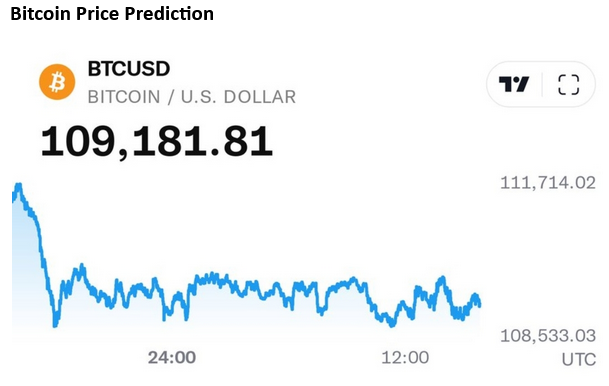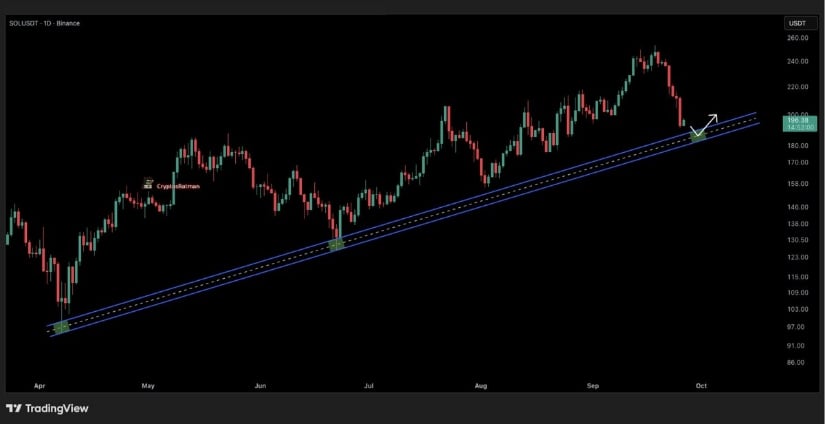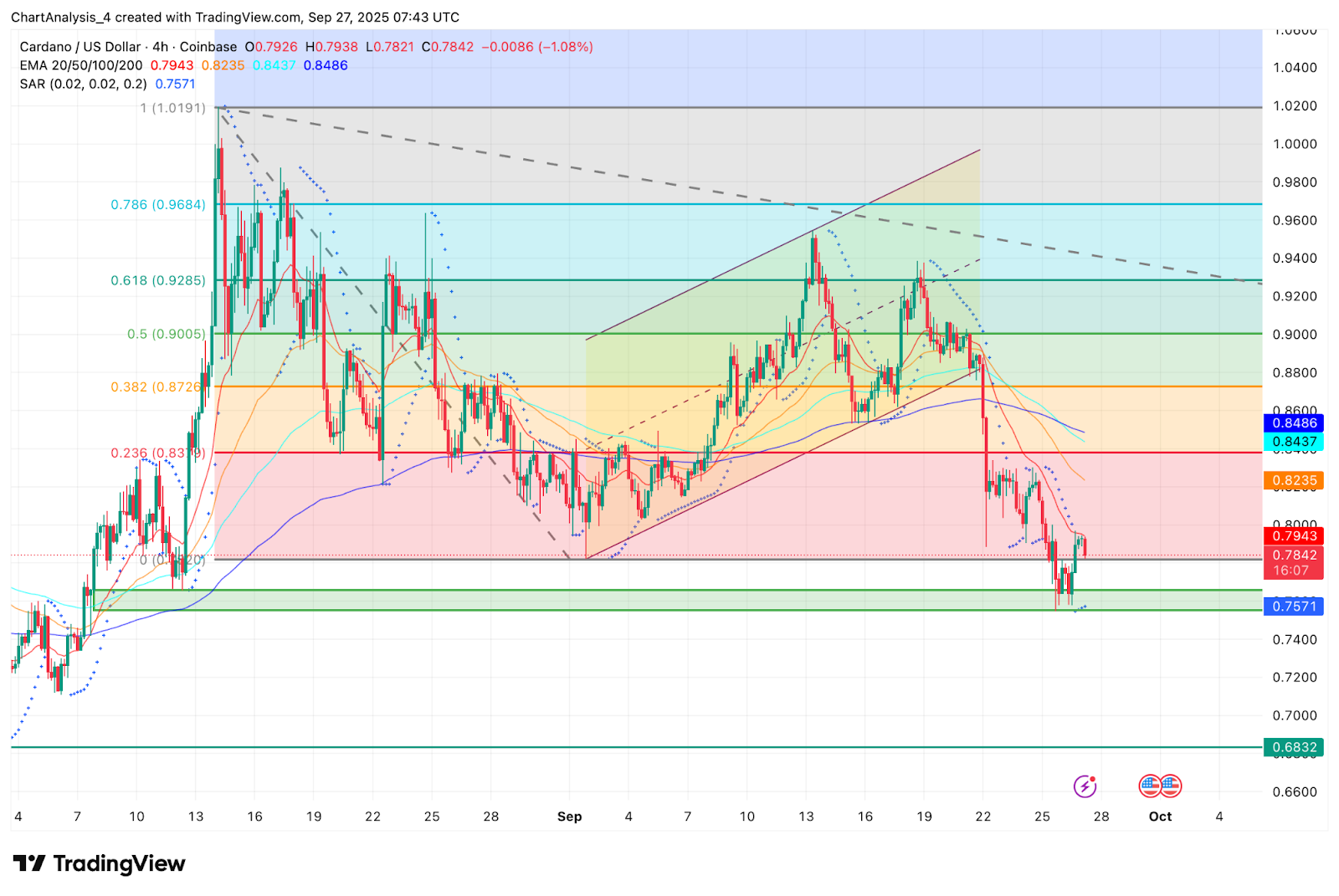Category: Forex News, News
Copper Price 2025 Trend: Current Forecast & Outlook
“Copper demand for green infrastructure may rise by over 15% by 2025, driving significant price volatility across global markets.”
Copper: The Metal of Civilization and Its 2025 Outlook
Copper, often dubbed the “metal of civilization”, continues to play a critical role in our evolving world. As we advance into 2025, the copper price 2025 trend has become a focal point for a wide range of industries due to its extensive applications in agriculture, infrastructure, electrical wiring, construction materials, irrigation systems, and advanced technologies.
Unprecedented supply-demand dynamics, geopolitical events, and a global push towards renewable energy and sustainable practices have combined to create both opportunity and volatility in the copper market.
In this detailed outlook, we’ll examine the current copper price trend 2025, drivers influencing copper price 2025 trend, the impact on agriculture and infrastructure sectors, and the copper price forecast end 2025. This guide also offers insights on industry adaptation, using real-world data and Farmonaut’s expertise in satellite-driven sectoral monitoring.
Current Copper Price Trend 2025: Setting the Stage
As of mid-2025, the current copper price trend 2025 is marked by notable volatility. After surpassing $10,000 per metric ton in late 2024, copper prices stabilized around the $9,200 per metric ton mark—still notably above historical averages. These peaks and subsequent stabilization were driven largely by supply disruptions in major producing countries like Chile and Peru, which together account for nearly 40% of global copper output.
- Labor strikes and regulatory tightening to improve mining environmental standards limited operational capacity throughout 2024 and into 2025.
- Electric vehicle (EV) production, wind, and solar infrastructure expansion continued at pace, boosting the demand for copper wiring, components, and supporting materials.
- Agricultural modernization and the shift to precision farming have led to an uptick in demand for copper-based components in irrigation systems and sensor networks.
Investors, governments, and sector stakeholders now closely monitor copper’s price trajectory, recognizing its direct implications for project budgets, technology adoption, and overall competitiveness in 2025 and the years beyond.
“Forecasts show agriculture could face up to 10% higher input costs if copper prices surge in 2025.”
Volatility Factors in the Copper Market
- Producers: Chile and Peru experienced mining disruptions due to environmental regulations, workforce shortages, and labor strikes, curtailing supply.
- Demand: Demand accelerated in infrastructure projects (urban electrification, power grid upgrades, water management), and agriculture’s embrace of advanced technology.
- Global Trends: The shift towards green energy, heightened environmental oversight, and integration of smart systems have all reinforced copper’s central role.
Downside risks remain present in the form of:
- Possible global economic slowdowns
- Geopolitical instability in major mining regions
- Technological alternatives (aluminum, graphene, recyclable composites) which remain limited in practical adoption as of 2025
Current Price Snapshot: 2025 Key Figures
- Price per metric ton: ~$9,200 (mid-2025 average, per LME data)
- Late 2024 High: >$10,000/ton—triggered by South American supply shocks
- Volatility Range: $8,700 – $10,300/ton over past 12 months
- Stabilization Factors: Gradual resolution of labor strikes; regulatory clarity in Chile, Peru
- Sector Impact: Infrastructure budgets rise; agricultural input costs increase
Drivers Influencing Copper Price 2025 Trend
The copper price 2025 trend is driven by a complicated set of factors that intertwine market fundamentals, policy decisions, technological shifts, and global economic dynamics. To understand why copper remains highly valued and volatile, it’s essential to unpack these major drivers:
-
Supply Constraints and Mining Disruptions
- Major copper mines in Chile, Peru, and Congo have faced environmental regulations and labor shortages, leading to limited supply availability.
- Strikes, natural events, and higher regulatory barriers disrupt flows, making global copper supply tightening a perennial theme.
- Environmental standards and operational costs are increasing, fueling upward price pressure.
-
Infrastructure Investment Boom
- Government stimulus and mega-projects worldwide focus on electric grids, water management, and sustainable urbanization—all copper-intensive.
- Power transmission, transportation, and water infrastructure rely heavily on copper wiring and durable electrical components.
- Recent policy announcements in India, China, the US, and EU increased allocated budgets for key copper-intensive projects.
-
Agricultural Modernization and Demand Surge
- The adoption of precision agriculture, automation, and electrification of machinery has steadily increased copper usage in irrigation systems, prevision sensors, wiring, and control systems.
- Expansion of electrically controlled valves and smart monitoring in water management require copper for conductivity and reliability.
- According to industry analysts, this segment’s copper demand is growing at 4-6% CAGR.
-
Environmental Policies and Regulatory Influence
- Stricter mining and environmental protocols (especially in Chile and Peru) increased compliance costs, affecting global pricing structures.
- Emission reduction targets and sustainability metrics directly impact mining site development, expansion, and scalability.
-
Technology and Electrification Push
- Renewable energy platforms, advanced battery systems, and EVs all require significant amounts of high-grade copper.
- This, along with the push for green infrastructure globally, has reinforced a sustained upward appetite for the metal.
Other Influencing Factors
- Currency movements (especially USD strength): Fluctuations affect buying power for importers.
- Geopolitical events: Conflicts or new trade policies in mining regions may spur supply fears.
- Material science evolution: Innovations could lead to copper substitutes in some applications, but widespread adoption remains distant as of 2025.
Sectoral Impacts: Agriculture and Infrastructure
The ripple effects of the copper price 2025 trend resonate across agriculture and infrastructure. These two sectors, fundamental to economic development and human well-being, are directly shaped by global copper supply, price volatility, and changing demand patterns.
Why Copper Remains Indispensable in Agriculture
- Advanced irrigation systems leverage copper’s superior conductivity and anti-corrosive properties, enabling reliable water delivery via sensors, wiring, and electronically controlled valves.
- Precision agriculture incorporates copper in soil moisture sensors, automated controllers, and power supplies—ensuring efficiency and sustainability.
- Crop health monitoring: Many smart tools utilize copper parts for durable field deployment.
- Sustainable agriculture initiatives, including climate-resilient irrigation, further raise copper demand.
Implications for Agricultural Stakeholders
- Input costs for irrigation equipment and farm electrification are noticeably higher (est. 10% increase compared to 2023 levels).
- Rise in the price of copper-based machinery and components influences total cost of ownership and capital investment planning.
- Transition to energy-efficient and durable copper systems benefits farmers via improved yields, but requires smarter budgeting and resource allocation.
- Explore Farmonaut’s Large Scale Farm Management solution for optimized field operations and resource tracking—integrating satellite data & analytics to offset rising input costs.
Copper’s Meaningful Role in Infrastructure Projects
- Power transmission and distribution: Nearly all modern electrical infrastructure employs copper for wiring, transformers, and switchgear.
- Construction materials: Copper is found in plumbing, cladding, and HVAC systems due to its durability and corrosion resistance.
- Water management projects: New dam, reservoir, and irrigation system builds rely on copper’s mechanical qualities for sensors, controls, and piping.
- Smart cities and urban infrastructure depend on copper-intensive connectivity and communication lines.
- For smarter asset utilization in infrastructure, explore Farmonaut’s Fleet Management Platform—helping organizations optimize equipment deployment and minimize operational disruptions.
Impacts on Infrastructure Stakeholders
- Major public works projects have restructured budgets to account for elevated copper prices in 2025.
- Long-term project planning now builds in price fluctuation buffers, procurement timing strategies, and supplier diversification to manage risk.
- Smart technology adoption and increased traceability are critical to coping with market volatility and promoting sustainable development goals.
- Farmonaut’s Blockchain-Based Traceability Solution offers end-to-end monitoring for construction and infrastructure supply chains—boosting trust and compliance.
Copper Price Forecast End 2025: What Analysts Say
The copper price forecast end 2025 remains cautiously optimistic amid potential headwinds. While new mining sites are expected to ramp up output, several powerful trends continue to sustain higher price levels:
- Continued strong demand from agriculture, infrastructure, and electrification megaprojects
- Lingering supply constraints and environmental regulations in top producing nations
- Possibility of further geopolitical disruptions, influencing both short-term volatility and long-term strategies
Key 2025 Price Predictions
- Analyst consensus: Copper will moderate from late 2024 peaks, but remain elevated compared to the historical average, hovering between $8,800 and $9,500 per metric ton by the end of 2025.
- This outlook takes into account gradual resolution of major supply disruptions and steady demand from advanced agricultural and infrastructure applications.
- Potential downside risks include rapid material science breakthroughs, sudden global economic shocks, and further trade policy complications.
For farmers, builders, and government agencies, this copper price 2025 trend underscores the importance of forward-thinking planning, technology integration, and supply chain resilience.
By embedding copper trend analysis into long-term portfolio and project management, industry stakeholders can better anticipate cost pressures and mitigate risks due to market shocks.
Technology & Market Insights: Copper Forecast with Farmonaut
Emerging technology is integral to understanding copper’s supply chain dynamics, demand shifts, and sectoral influence. At Farmonaut, we harness satellite technology, AI, and blockchain to deliver real-time insights for agriculture, mining, and infrastructure stakeholders.
How Farmonaut Supports Copper Supply Chain Resilience
-
Satellite-based monitoring: Allows continuous tracking of agricultural fields, mines, and infrastructure projects, ensuring resource management adapts to fluctuating copper prices.
Learn more: Farmonaut Platform
- AI-driven analytics: Our Jeevn AI Advisory System provides real-time recommendations for optimizing operations, reducing unnecessary copper wastage, and enhancing project longevity.
- Blockchain traceability: Integrates transparency into the supply chains for agriculture and infrastructure sectors—verifying that copper inputs are ethically sourced and tracked from mine to project site.
- Carbon footprinting: Farmonaut offers Environmental Impact Monitoring tools to help organizations monitor emissions and reduce the environmental cost associated with copper-intensive activities.
- Fleet and resource management: Our tools, such as Fleet Management, ensure smarter deployment of machinery and input streams, reducing overall operational exposure to price fluctuations.
For developers and businesses aiming to integrate satellite and resource tracking solutions, access the Farmonaut Satellite API and see the API Developer Docs.
Get Farmonaut on Any Device
Copper Price Forecast Table by Sector and Year
| Year | Estimated Copper Price (USD/ton) | Agriculture Sector Impact | Infrastructure Sector Impact |
|---|---|---|---|
| 2023 | $8,400 |
Usage: ~2.1 million MT
Modernization pace steady; initial adoption of electrified irrigation and smart sensors. Price volatility starts increasing. |
Usage: ~13 million MT
Major global infrastructure projects initiated; budget constraints moderate. |
| 2024 | $9,800 |
Usage: ~2.3 million MT
Heightened adoption of electrification in machinery and irrigation due to regulatory incentives. Input costs rise significantly. |
Usage: ~14 million MT
Infrastructure spending spike, smart city pilots rise. Supply disruptions in Chile/Peru affect cost and scheduling. |
| 2025 (Est.) | $9,200 |
Usage: ~2.5 million MT
Precision agriculture, renewable-powered irrigation, and advanced monitoring expand copper needs. Estimated 10% increase in agri input costs if prices surge. |
Usage: ~15 million MT
Large-scale utility/grid electrification, EV infrastructure, enhanced water resource projects drive demand. Strategic planning vital for cost management. |
Access Advanced Satellite Insights with Farmonaut Subscription
Unlock real-time copper supply, agricultural activity, and infrastructure monitoring with affordable, scalable Farmonaut plans:
Managing Price Volatility & Investment Planning
Best Practices for Agriculture and Infrastructure Stakeholders
- Strategic Procurement: Lock in copper supplies when prices stabilize; consider contracts indexed against the copper price 2025 trend.
- Diversify Suppliers: Build relationships with alternative copper sources and recycled material vendors to manage availability risks.
- Leverage Technology: Deploy remote monitoring, such as Farmonaut’s satellite-based trackers, to spot resource bottlenecks and optimize input usage.
- Plan for Sustainability: Track and reduce carbon footprint associated with copper-intensive projects—explore Carbon Footprinting solutions for comprehensive impact analysis.
- Consider Alternatives: Where technical requirements allow, explore hybrid wiring, sensor packages, or recycled copper to offset price surges.
- Access Financing: For farm and mining projects, utilize Farmonaut’s crop loan and insurance monitoring services to secure favorable terms by reducing fraud risk—critical as planning costs rise with copper.
How Farmonaut Helps
- Real-time alerts for vegetation, soil health, mining, and infrastructure activity—allowing agile responses to market volatility.
- Resource optimization tools reduce wastage and align with fluctuating copper prices and input needs.
- Full integration with business supply chains for streamlined traceability, financing, fleet, and project management.
Frequently Asked Questions (FAQ) – Copper Price 2025 Trend
What is driving the copper price 2025 trend?
The copper price 2025 trend is primarily driven by sustained demand from green infrastructure, agricultural modernization, and supply constraints in major mining countries. Environmental regulations, labor issues, and technological advancements also influence pricing.
How high could copper prices reach in 2025?
Analyst forecasts expect copper to remain elevated, trading between $8,800 and $9,500 per metric ton by end of 2025. Spikes above $10,000 are possible if significant supply disruptions occur.
What are the implications for the agriculture sector?
Agriculture faces higher input costs for irrigation and electrified farm equipment, with precision technologies raising overall copper demand. Strategically managing copper purchases and leveraging technology like Farmonaut can help offset rising expenses.
Why does infrastructure development impact copper prices?
Infrastructure projects—like power grids, transportation, and water management—are copper-intensive. As governments worldwide ramp up investment, demand for copper grows, influencing global pricing.
How can technology like Farmonaut assist in managing price risks?
Farmonaut’s platform enables real-time monitoring of agricultural fields, mining sites, and infrastructure, providing actionable insights to help businesses optimize usage and adapt to copper price volatility. Blockchain traceability adds transparency and risk reduction across the supply chain.
What risks should stakeholders be prepared for?
Risks include further supply disruptions, stricter environmental regulations, global economic slowdowns, and the limited but evolving risk of copper alternatives. Strategic planning and smart resource management are key to resilience.
Conclusion: Staying Ahead in 2025
The copper price 2025 trend illustrates a market in transformation. Sustained demand from agriculture and infrastructure, tempered by supply constraints and evolving market dynamics, ensures copper’s critical role as the metal of civilization remains secure. For sector stakeholders, adapting to fluctuations requires an integrated approach—leveraging technology, optimizing investments, and proactively managing risks.
Farmonaut stands ready to empower businesses, governments, and individual users with affordable satellite-based insights, AI advisory, and digital supply chain solutions. By monitoring copper price trends, enhancing operational agility, and driving sustainability, we enable you to respond effectively to 2025’s challenges and opportunities.
Stay ahead of copper price 2025 trend with the latest intelligence, only on Farmonaut.
Source link
Written by : Editorial team of BIPNs
Main team of content of bipns.com. Any type of content should be approved by us.
Share this article:















